Animated elements are cool features to add to websites; not only are they visually appealing, but they also improve user experience. They add a dynamic feel and modern look to a website and make it easy for users to interact with different elements on the site.
When adding animations to websites, writing CSS code from scratch may be redundant because there are a lot of animation libraries that simplify the creation of animated elements on web pages.
Choosing the right animation library, therefore, depends on certain criteria. In this article, we will look at these criteria(s) and highlight the types of animation libraries that are great choices for developers. But first…
What is an Animation and Libraries?
An animation is a form of motion, and the idea of motion is such that when still images change fast enough, they produce the optical illusion of appearing as a single persistent image that’s gradually changing form and position.
In web design, animations are graphical effects used to create movement and interactive features on a website.
Libraries, on the other hand, are precompiled code to add specific functionality to applications, these libraries contain reusable code for different tasks, saving developers time and effort.
Animation libraries are simply pre-built animations that help developers implement animations on websites or web applications. They typically contain animations like slides, scrolling, bounce effects, etc.
Application of Animations on the Website
Animations can be applied on websites or applications for reasons that include;
Aesthetic: Animations make websites dynamic and enhance the UI (user interface), creating a visually appealing appearance.
Visual Feedback: Animations can inform users if they perform the right actions using visual feedback. For example, a hover animation can tell users that a particular element is interactive.
Transition: Animations can be used for smooth transitions between web pages, such as fading elements in and out.
User engagement: Animations grab users' attention and can encourage them to interact with the elements on the web page.
Storytelling: Animation is effective in telling stories on the web. It can be used to evoke emotions and communicate brand identity.
Brand differentiation: Standing out as a brand is important, especially if other brands offer the same services. Customizing animations to emit your brand personality and values would create a distinct identity that would appeal to the target audience.
Now that we have explored the reason for using animation on websites, what animation elements can be added to enhance a website?
Smooth Scrolling Effect: Applying smooth scroll creates fluid and visually pleasing transitions when users navigate web pages. This effect enhances user experience and improves accessibility for users using assistive technologies.
Hover effects: Applying hover effects to interactive elements like buttons, images, and links enhances user interactions.
SVG Animations: SVG animations bring static images to life for a more dynamic user experience.
3D animation: The use of 3D graphics to create more complex interactive designs, for instance, displaying products in 3D environments allows users to see different angles of the product.
What to Consider when Selecting an Animation Library
There are certain reasons to consider when choosing an animation library for websites, and they include;
Performance: Choosing a high-performance library ensures that animations run smoothly without any delay. This is important for user experience - users will get frustrated if the library causes the website to lag.
Customization: A customizable library allows developers to create more personalized designs. It gives them control over the look and feel of the animations.
Project Size and Scope: The project size and scope also determine the library for your project. Choose a lightweight library for smaller projects to keep your project light. It's essential to use a customizable, scalable, and performant library for medium and larger projects.
Choosing a robust library with features that support more complex animations and can handle complex projects is important.
Cross-Browser Compatibility: The animation library must be cross-browser compatible meaning it must work well across different devices and browsers.
Size and Dependencies: The size of the library determines the load time. If the file size of the library is small, it will load faster this is important for the performance of the website especially when there's a poor network connection. Also, the number of dependencies of the library may increase its size.
10 Animations Libraries to Consider
Anime.js

Anime.js is a JavaScript animation library with a simple, yet powerful API. It works with CSS properties, SVG, DOM attributes, and JavaScript Objects to create simple and complex animations.
Some features of anime.js include;
- It Supports modern browsers
- Anime.js supports easing functions for smooth animations.
- Users can apply multiple animations simultaneously to the same object.
Popmotion
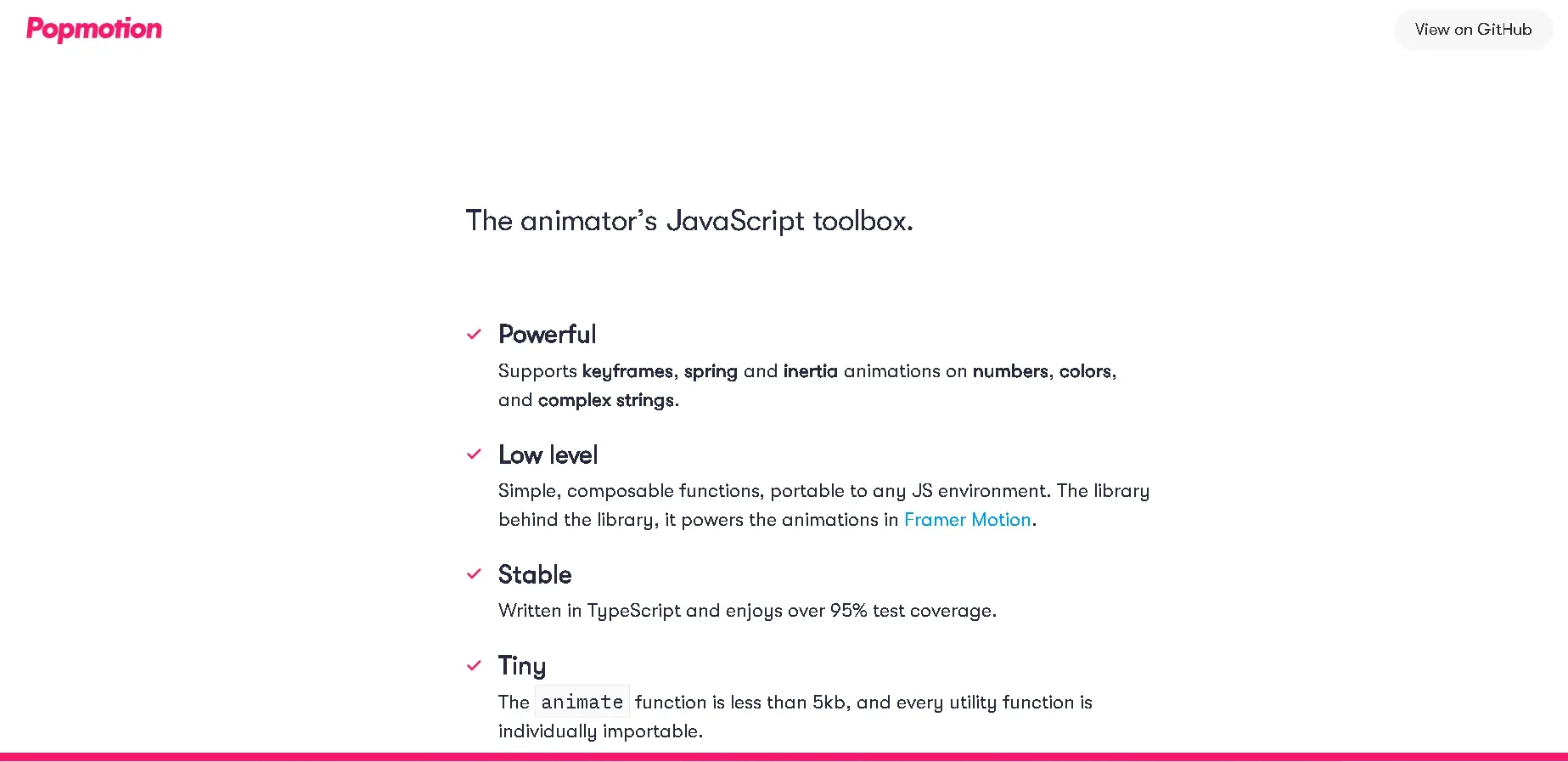
Popmotion, the animator’s JavaScript toolbox is a lightweight, simple animation library for high-performance animations. Some of its features include;
Declarative API: Pop motions API is easy to use.
Composability: Users can combine animations to create complex effects.
SVG / CSS support: Users can animate SVG and CSS properties
Lightweight: Animate function is less than 5kb, and every utility function is individually importable.
Supports typescript: it is written in typescript and provides type definitions for typescript projects.
Browser Support: It supports modern and older browsers (may require tools like Polyfil to ensure compatibility)
Three.js
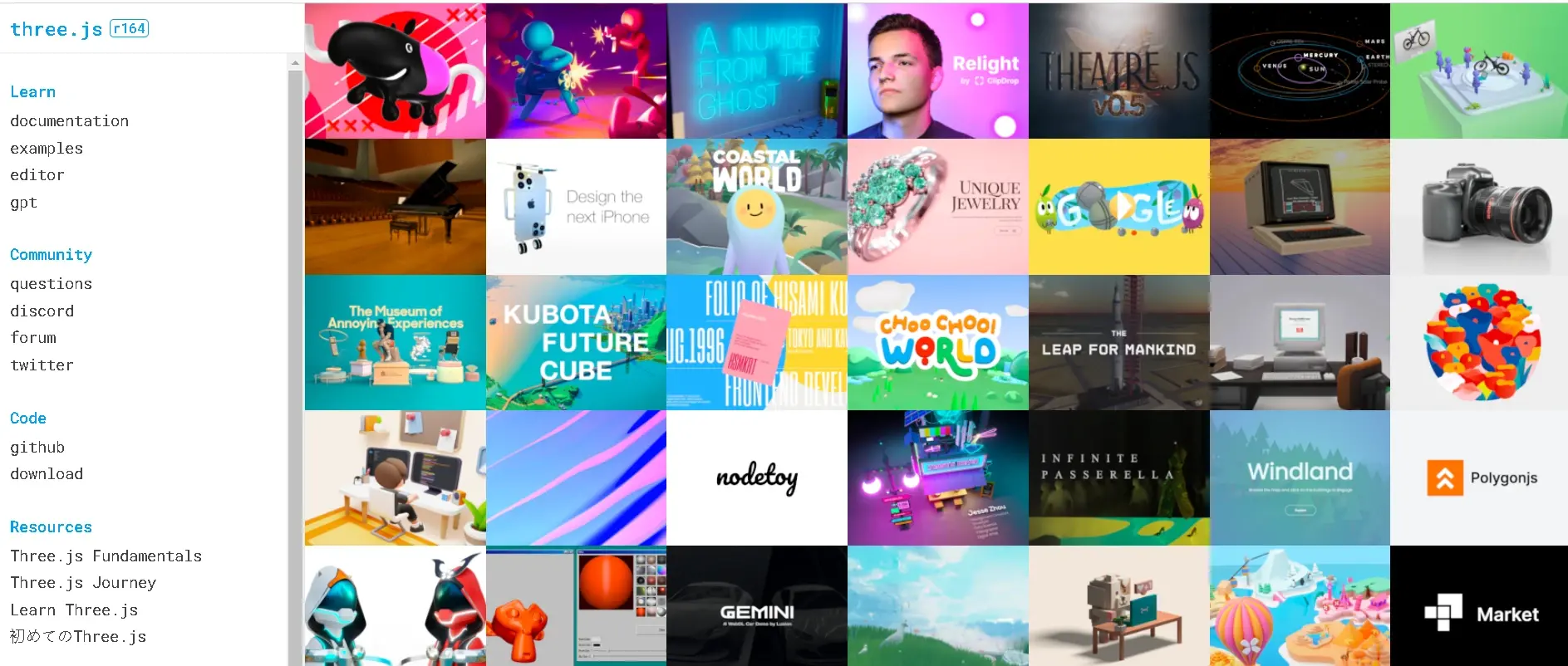
Three.js is a cross-browser JavaScript library for creating 3D graphics with high-level API, making it easy for users to create 3D animations and visualizations without limited WebGL (We Graphics Library) knowledge. It’s used to build interactive 3D scenes, animations, and models. Some features include:
- Keyframe animation and physic-based simulations (for realism).
- GPU (Graphics processing unit) acceleration for fast rendering.
- High-level API for 3D graphics.
- Modern and older browsers support, however, this support is limited.
Framer Motion
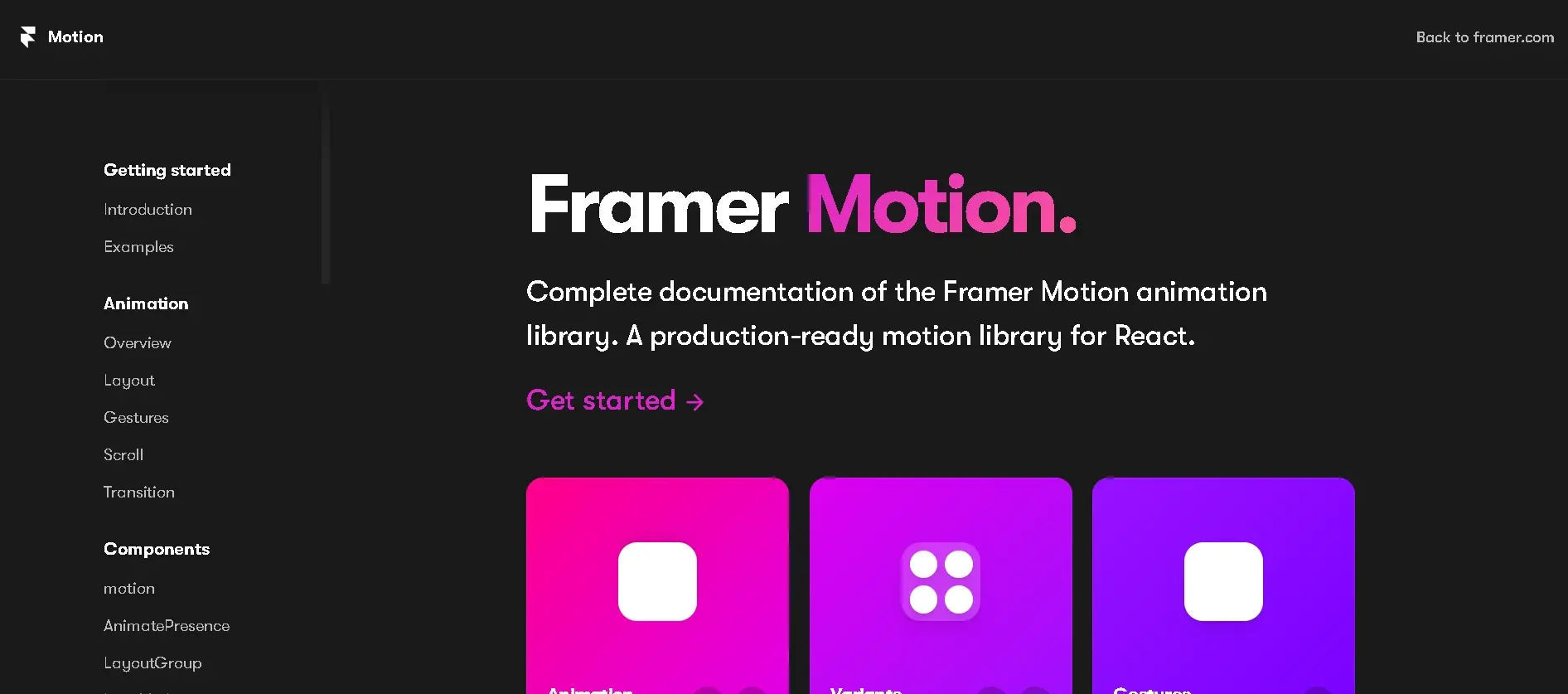
Framer Motion is an animation library for React that includes features for creating fluid and dynamic animations. Some features of framer motion include:
Simple declarative syntax (less code for readability and maintainability).
Extendable; Provides advanced listeners, and extends react event listeners /handlers for managing animations and interactions, such as gestures, scrolls, etc.
Modern browsers support, but offer limited features for older browsers.
Robust support for animating SVG elements.
GSAP
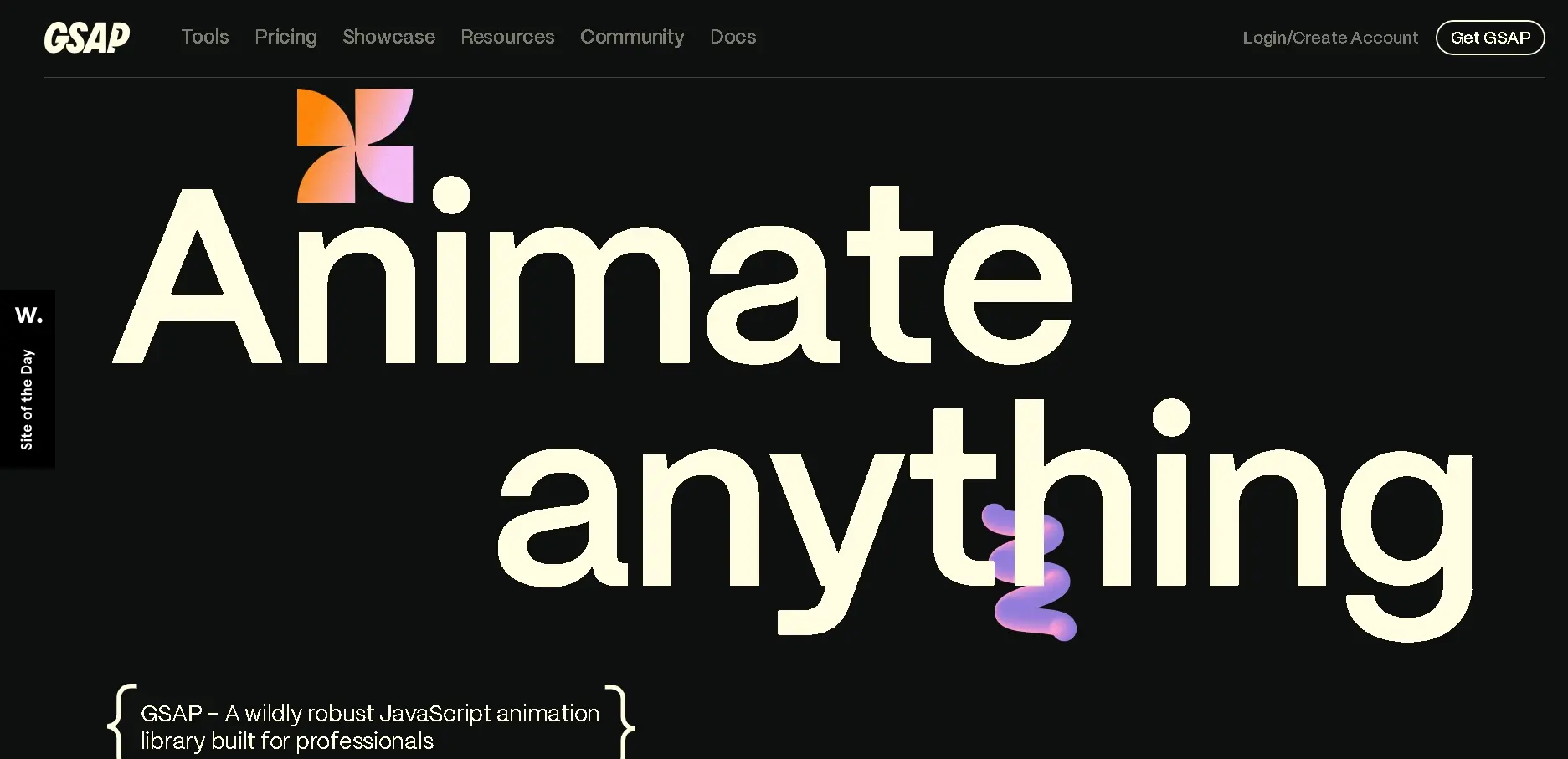
GSAP (GreenSock animation platform) is a robust JavaScript library for professionals to create high-performance animations. Some features of GSAP include;
- Supports major browsers.
- Smooth performance for simple and complex animations.
- GPU acceleration for fast rendering.
- Customizable easing (e.g. ease-in, ease-out, linear) and playback controls (e.g. pausing, rewinding).
Mo.js
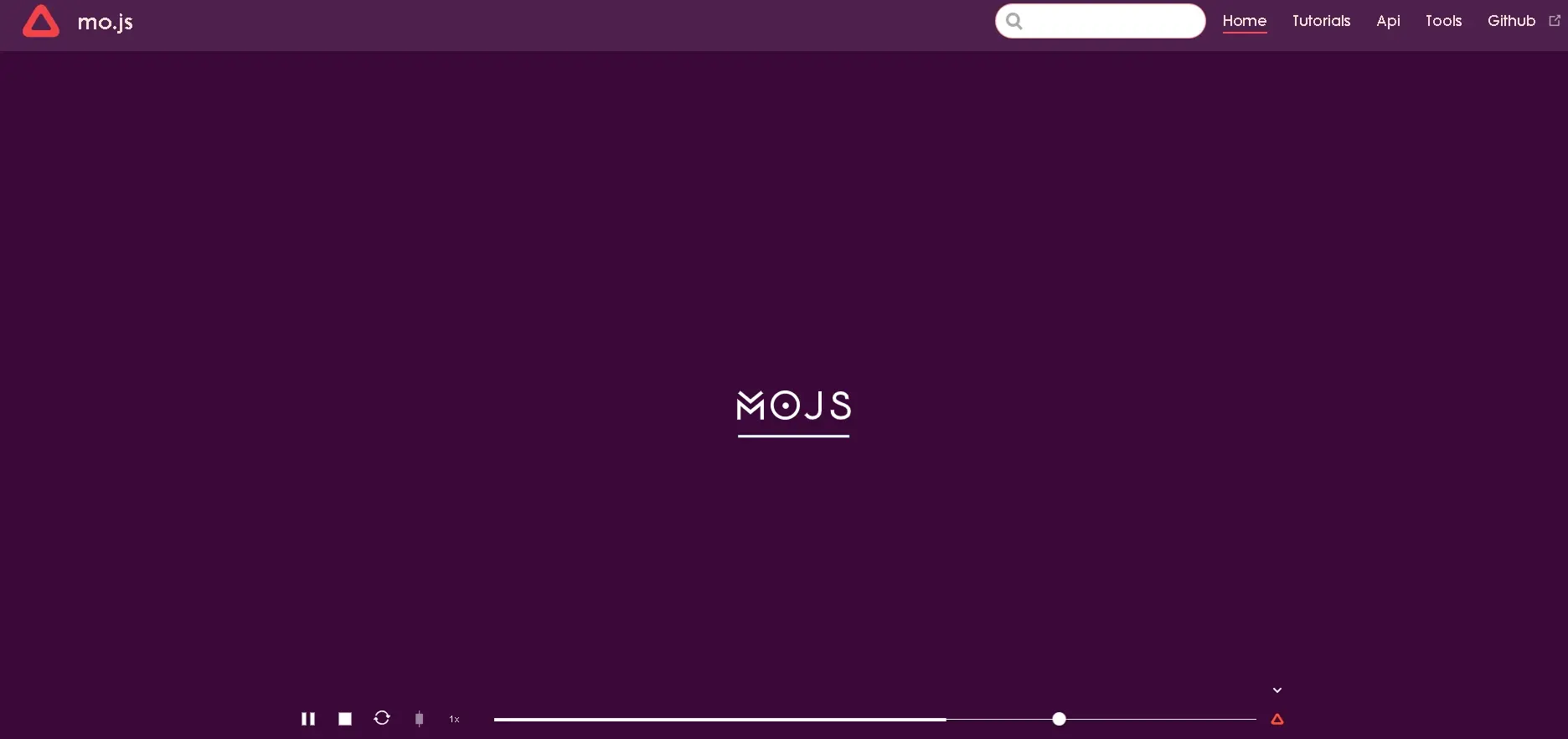
Mo.js is a JavaScript library for motion graphics. It is used for creating complex, high-performance animations and interactive visual effects. Some features include;
Simple declarative API.
Custom build based on project needs.
Lightweight and modular; It's fast, with a modular design that allows users to include only parts of the library needed for a project, keeping it light.
Curve editor for creating and editing custom easing curves.
Supports new and older browsers but may lack support for certain older browser features.
AOS (Animate on Scroll)
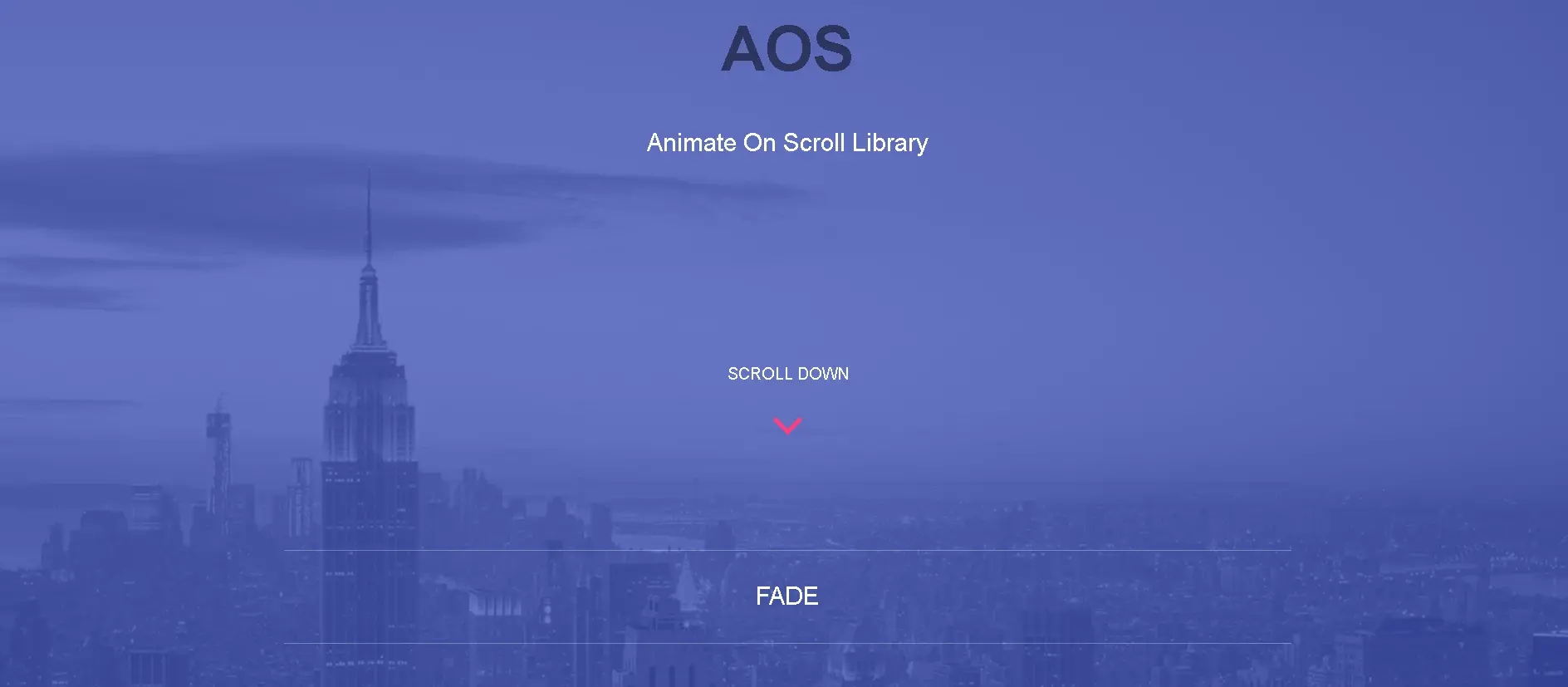
AOS (Animate on Scroll) is a JavaScript library used to animate elements on Scroll. Some features of AOS include;
- Easy to use and integrate.
- Built-in animation effects that are customizable.
- Responsiveness; works across various screen sizes and devices.
- Cross-browser compatibility
ScrollReveal
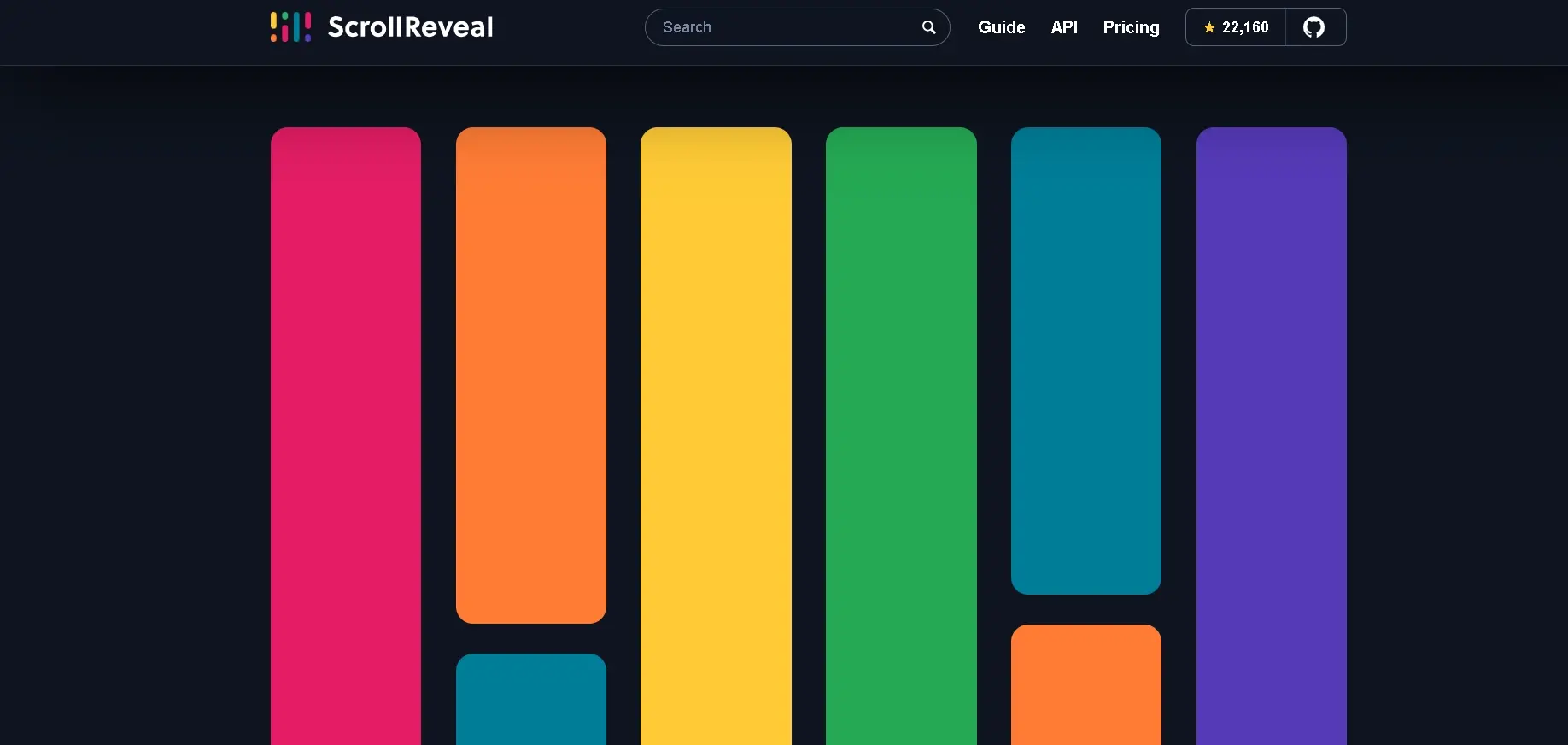
ScrollReveal is a JavaScript library that animates elements as they scroll into view, or enter and leave the viewport. It is a robust and flexible library that is also easy to use. Features of ScrollReveal include:
- Easy to use.
- Customizable scroll effects e.g. timing, duration, easing, etc.
- Includes optimization for smooth animation playback.
- Responsive animations (animations work across various screen sizes and devices).
- Support modern browsers/limited level of support for older browsers.
Theatre.js
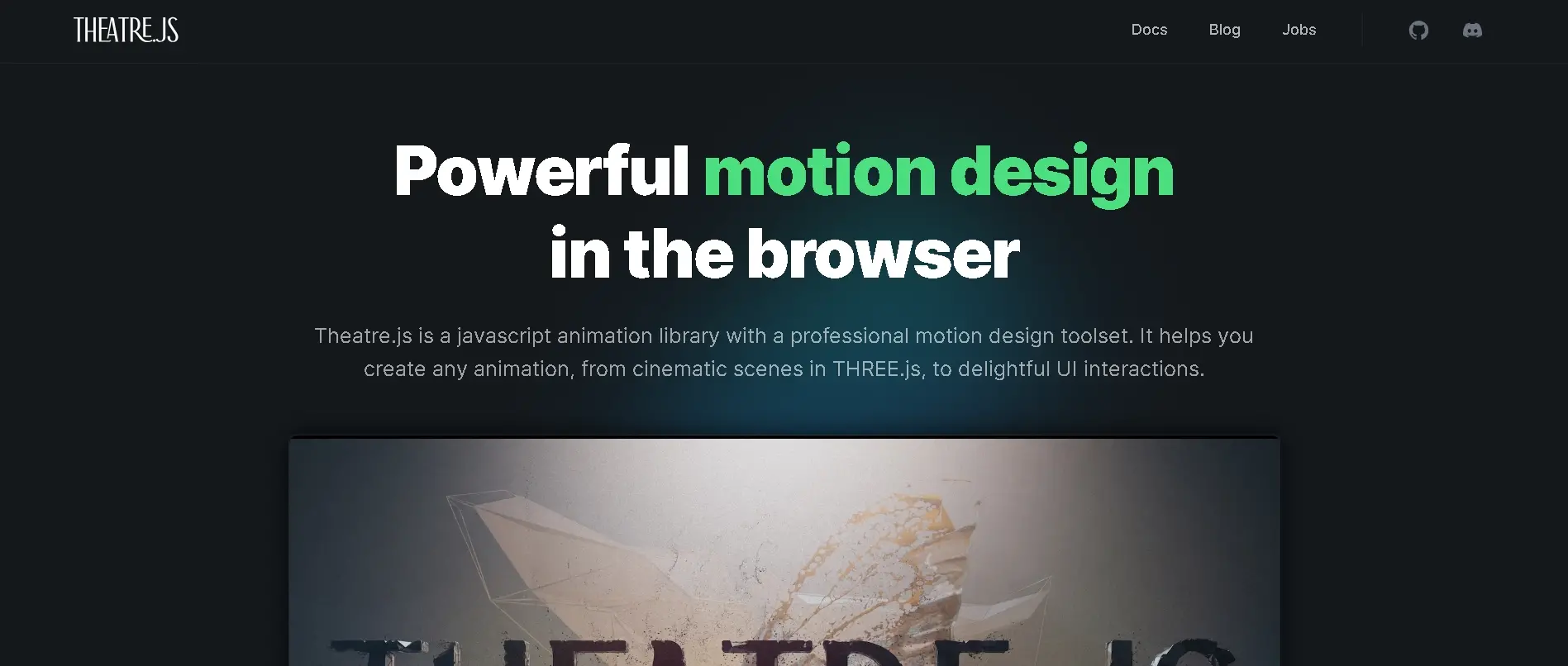
Theatre.js is a JavaScript animation library with a professional motion design toolset. It helps you create any animation, from cinematic scenes in THREE.js to delightful UI interactions. Features of Theatre.js include:
Works with THREE.js and other 3D libraries.
Cross-browser compatible.
Flexible; developers can create animations based on their needs.
Extensible developers can extend their functionality by using extensions.
Supports visual timeline editing (Timeline editor allows users to design complex animations) and programmatic animation (Theatre.js API can be used to define animations and specify properties like duration, easing, trigger animations, etc.)
Velocity.js

Velocity.js is a lightweight, cross-platform JavaScript animation library that combines CSS and jQuery transitions, optimized to provide fast and smooth animations. Velocity is free, open source, and a popular library for web applications.
Features of Velocity include:
Short syntax; easy-to-use API.
Chaining (you can add multiple animations to an element).
Easing functions for creating custom animations with acceleration (ease-in) or deceleration (ease-out) effects.
Support SVG; can be used to animate SVG elements.
Summary
Animated elements give life to websites, tell stories, and captivate users through beauty and engagement.
Numerous animated designs, from scrolls, and loading features to bouncy effects, and more complex animations, can be added to websites easily, with libraries that contain pre-built animations making it easy for developers to integrate into their projects without having to write vanilla CSS from scratch, saving time and energy.
Frequently Asked Questions
Can I use Astro.js with other JavaScript libraries and frameworks?
Yes, Astro.js is designed to work with various frontend frameworks and libraries, allowing you to leverage your preferred tools alongside its performance optimizations.
How can I ensure third-party plugins or libraries used in my application do not introduce CSRF vulnerabilities?
Regularly update and review third-party components, ensuring they follow secure coding practices and do not introduce CSRF vulnerabilities.
Can free HTML editors support other languages like CSS and JavaScript?
Yes, free HTML editors often support languages like CSS and JavaScript, enabling integrated web development.

Jessica Agorye is a developer based in Lagos, Nigeria. A witty creative with a love for life, she is dedicated to sharing insights and inspiring others through her writing. With over 5 years of writing experience, she believes that content is king.
View all posts by Jessica Agorye




















